In many professions, digital transformation has led to a blurring and expansion of job titles and responsibilities. Organisations that previously treated their IT delivery work as project-based have shifted to a product-based agile approach. This has contributed to a rise in job titles such as “Product Designer” alongside other maturing niches under the umbrella term UX (User Experience), including content design, UX research, and UX design.
Product designers need to understand Information Architecture, user research, and visual and interaction design principles in the same way UX designers do. They also need to understand how to work in agile iterations to continually improve a digital product, make sure business needs are met, and coordinate the stakeholders involved in the agile process. Let’s explore the top five trends that will impact Product Designers in 2022 given shifts in work processes, digital acceleration, and changing consumer expectations.
Modular design and design systems
The first digital product design trend isn’t new but is becoming more ubiquitous, with companies such as IBM, Uber and Airbnb popularising modular design and its benefits such as:
Helping to maintain a consistent experience across multiple digital channels (e.g. mobile app, website, chatbots, etc.)
More inclusive and accessible design using vetting mechanisms that only accept accessibility-friendly components
Improved communication between designers and developers due to a shared understanding and visual language around components
Faster design and development iterations by reducing back and forth clarifications on design details. (In a 2021 survey conducted by InVision, 90% of respondents with a design system reported that it saved them at least one hour of work per week).
In enterprise organisations, design systems usually require a dedicated team to build and maintain them as well as the contribution of the larger design practitioners in the organization. This digital design trend is expected to grow in 2022 and help organisations scale up their product design operations more rapidly.
DesignOps
The rise in demand for product design professionals also signals a rise in demand for design leaders in 2022. Companies that grow their design teams and bring a bigger diversity of designers onboard (e.g. content design, design research, information architectures, etc.) could even find themselves needing to hire practice leads for each speciality. This could be necessary to support the consistent professional development of practitioner communities within the organization.
DesignOps practitioners or design leads usually deal with the day-to-day operations and scaling of design teams. They can deal with both the operational aspects of design teams (e.g. running team meetings, allocating tasks, onboarding team members and dealing with software vendors), and even with some strategic tasks such as including design and research work in roadmaps and anticipating projects that require special design methods such as design sprints. Practice leads could also fall under the big umbrella term of DesignOps, and they usually help diffuse knowledge in their practice across similar professionals who work across different teams in the organization. One of their main challenges for design leads would be to bring their leadership skills to a place where they complement and do not duplicate the work of other stakeholders, such as product managers.
Voice interfaces
Voice User Interfaces or VUIs reduce screen fatigue and increase accessibility by providing hands-free and eyes-free interaction. Be it on mobile devices or dedicated voice interfaces (e.g. Amazon Alexa, Google Home), many of us now comfortably use voice interfaces to perform basic tasks such as asking for driving instructions or playing music. In 2019, roughly 40% of online users used voice search at some point.
Going forward product designers will be expected to expand use cases for voice interfaces by designing multi-interface experiences using voice and screen for applications in fast-growing sectors such as smart homes and e-commerce. Product Designers who can solve for challenges associated with VUIs such as privacy concerns, lack of accuracy and suitability to public spaces will be a step ahead in using VUI as a competitive advantage for their product.
Augmented Reality (AR)
With the announcement of Facebook rebranding to Meta and investing in AR and VR technologies, many companies are feeling the pressure to compete and gain an early-mover advantage when it comes to the metaverse.
In previous years, we’ve already seen AR applications being developed for e-commerce, home improvement, and teaching. Further fields that could benefit from adding AR capabilities could be navigation, healthcare, and more. Digital product designers will have to start thinking in 3D instead of 2D to build prototypes and functioning UIs that leverage what users see around them. After all, in AR, users’ reality is the starting point for a UI, and that will require new design methodologies.
Personalisation on the front-end
It’s now common for backend applications of Machine Learning (ML) to power personalized digital experiences on the front-end. In the past few years, the focus has been on improving algorithms in the backend to help bring high-quality recommendations to users whether it’s what to buy, what movies and tv series to watch, or what music to listen to.
2022 is likely to mark the beginning of a mindset shift in which strong digital design on the front-end is what’s necessary to take personalization to the next level. Some examples of areas that digital product designers could improve in 2022 and beyond include:
Designing better onboarding flows that invite users to share their preferences to enable personalization
Enhancing personalisation with the right content and the use of ‘content libraries.’
Designing experiences that do not feel too much like “someone is always listening” to avoid privacy concerns to be expressed by users
Where to learn more
UX vs Product design:
Coursera
UX Collective
Modular design and design systems:
Carbon design
Accessibility in design systems
InVision
Voice interfaces:
Adobe
PwC
Oberlo
Personalisation:
Clear/Point
99design
DesignOps:
Nngroup
Sign up for the Adrenalin newsletter below for more expert advice and tips on Product Design and digital transformation.
Learn from us
Join thousands of other Product Design experts who depend on Adrenalin for insights



